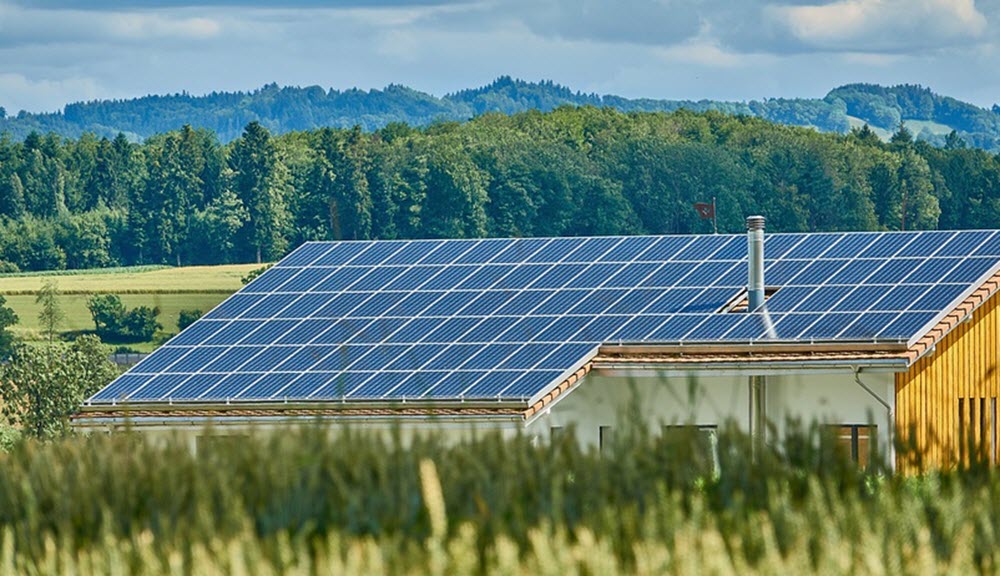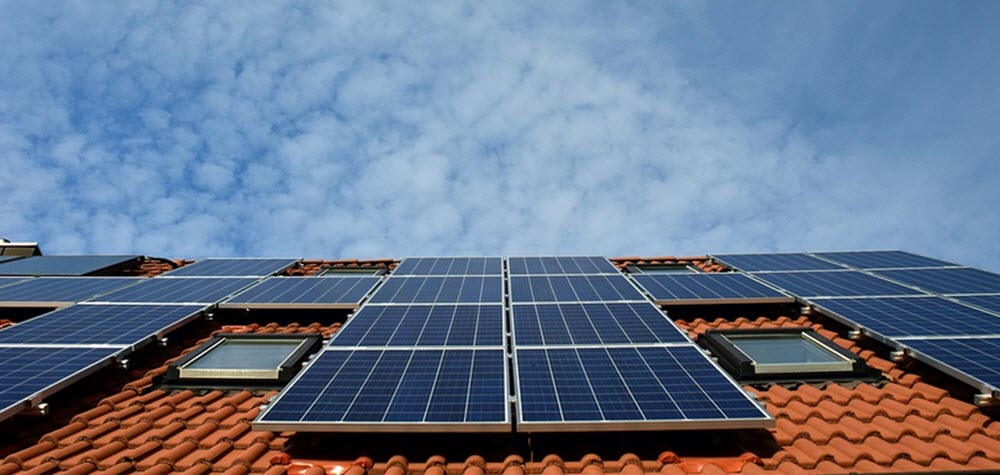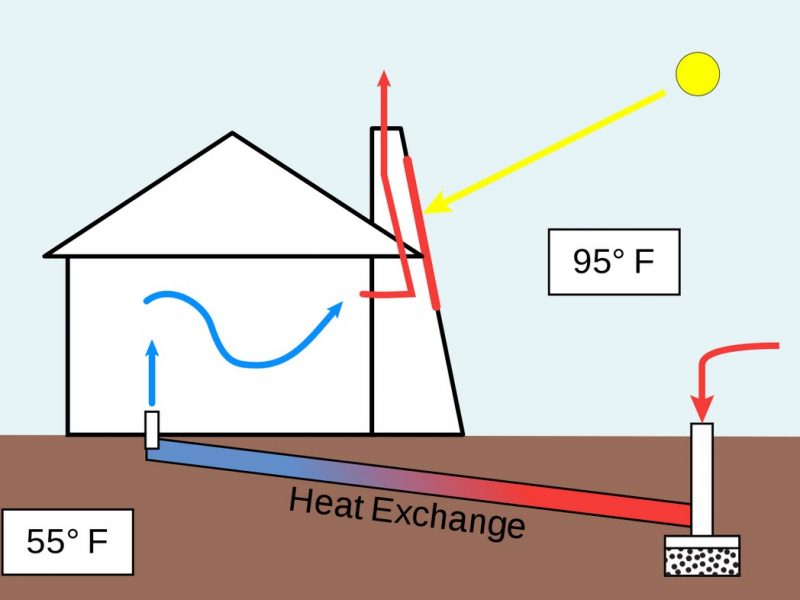Solar cells can be placed on buildings to convert energy from the sun into electric energy through the photovoltaic effect. The most common setup is still to place solar cell panels on top of the house, but it is also possible to utilize other surfaces and a lot of research is currently being carried out in this field.
The electricity generated by a solar cell setup is direct current (DC), but it is not complicated to add an inverter to turn it into alternating current (AC). Many commercial systems have this inverter included in the package, since the typical building will require AC for its electrical network.
Different types of solar cell systems for buildings
Crystalline silicon systems
The first generation of commercially available solar cell systems for buildings utilized crystalline silicon (c-Si) materials, either monocrystalline silicon (mono-Si) or polycrystalline silicon (poly-Si). Crystalline silicon is a semi-conductor. Mono-Si is one continuos crystal, wile poly-Si consists of many small crystals.
These systems are also known as wafer-based solar cell systems, and they are still by far the most common type of solar cell systems for buildings. The ”wafers” are typically between 160 and 240 micrometers thick.
Amorphous silicon solar cells
The amorphous silicon (a-Si) solar cell systems were introduced more recently than the crystalline systems, and are still more unusual in the trade. Amorphous silicon is not crystalline, and a-Si solar cells do not perform as well as c-Si solar cells. The advantage with a-Si is that these solar cells are much more flexible and the solar cell setups can be made much thinner. They are therefore used for thin-film solar setups.
It should be noted that not all thin-film solar cell systems are a-Si; it is for instance possible to use CdTe and CIGS instead.
CdTe solar cells
CdTe solar cells are made from cadmium telluride. They are used in certain thin-film solar cell setups.
CIGS
Copper indium gallium selenide solar cells are called CIGS solar cells. They are used in certain thin-film solar cell setups.
Organic materials
It is possible to make solar cells using certain organometallic compounds. At the time of writing, these solar cells are still in the research stage.

About solar cells
A solar cell use the photovoltaic effect to convert energy from the sun into electric energy. (Therefore, they are also called photovoltaic cells.)
A common single-junction silicon solar cell can generate as much as 0.6 volts (open-circuit voltage).
A solar panel consists of a number of photovoltaic modules, and each such module consists of many solar cells. When we connect several solar panels together, we get a solar array.
About the photovoltaic effect
The photovoltaic effect is both a physical and chemical phenomenon. The material will absorb light, and this results in the excitation of an electron or other charge carrier to a higher-energy state. Therefore, voltage and electric current is generated. The electric potential (voltage) is produced by the separation of charges.
Solar cells are made from semi-conducting materials, and when light reaches the solar cell photons are absorbed by the material, and electrons are excited from their current orbital. When an electron is excited, it can either return to its old orbital by dissipating the energy as heat or – alternatively – travel through the solar cell until it reaches an electrode. If it travels, current will flow through the solar cell material, and this current is captured and turned into electricity that we can use to power our buildings etcetera.
In order to drive and direct the current, it is common for solar cells to be composed to two layers and these two layers will not have the same chemical electric charges.



